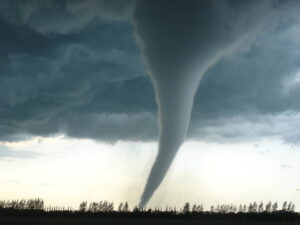Present-Day New Madrid Earthquakes May Still be Aftershocks of the 1811-1812 Seismic Events
2 min read
New Madrid Fault Line (Wikipedia)
A groundbreaking study has brought new insights into the seismic activity of the New Madrid seismic zone, challenging the conventional understanding of earthquakes and aftershocks in stable continental areas. Utilizing the nearest-neighbor (NN) method, the study analyzed earthquake occurrences from 1980 to 2016, revealing that a significant portion of these events may still be aftershocks from the early 19th-century earthquakes.
Key Insights from the Study:
- Potential Long-Lived Aftershocks: According to the study, between 10.7% and 65% of earthquakes (magnitude ≥ 2.5) in the New Madrid region during the 36-year tracking period could be aftershocks of the 1811-1812 seismic events. These historic quakes registered magnitudes between 7.3 and 7.5, among the most powerful in U.S. history.
- Statistical Approach: The NN method calculates distances between pairs of earthquakes in a space-time-magnitude domain. If the distances are closer than expected for independent events (which follow the Gutenberg-Richter law and Poisson distribution), they are classified as clustered events, with the latter event being an aftershock of the former.
Controversy and Implications:
- Debate Among Geoscientists: This study diverges from earlier research, which did not find evidence of long-lived aftershock sequences in the New Madrid zone. The debate centers on whether current seismic activity is a continuation of the 1811-1812 aftershocks or independent seismic occurrences.
- Implications for Hazard Assessment: Understanding whether modern quakes are aftershocks or new seismic events is vital for assessing future disaster risks in the region, even if the recent seismic activity causes little to no damage.
Background on the New Madrid Seismic Zone:
- The New Madrid seismic zone, stretching across parts of Missouri, Arkansas, Tennessee, and Kentucky, was the site of a series of powerful earthquakes in 1811 and 1812.
- Its seismic nature remains a subject of extensive study due to its potential impact on the densely populated and economically vital Mid-Mississippi River Valley.
Future Directions:
- Continued Research Needed: The study underscores the need for ongoing research to unravel the complexities of seismicity in the New Madrid region, given its potential implications for millions of residents.
- Refinement of Seismic Models: Advanced modeling and analysis methods, like the NN method, could further refine our understanding of aftershock sequences and their characteristics in stable continental regions.
This research marks a significant step in understanding seismic activity in the New Madrid seismic zone, suggesting that the legacy of the historic 1811-1812 earthquakes may still be influencing present-day seismic events.





